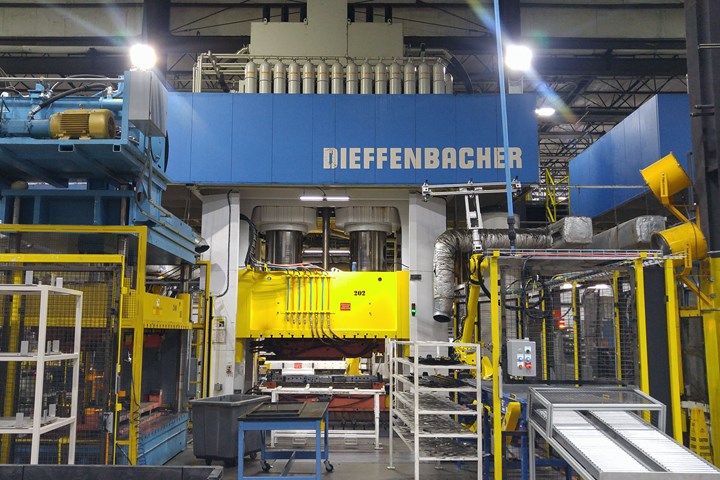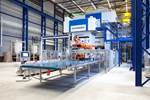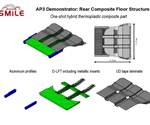Continental Structural Plastics orders new Dieffenbacher D-LFT line
D-LFT line, including a 2,500-tonne hydraulic press, will be used to produce pickup truck tailgate covers at the Teijin Group subsidiary’s Sarepta, Louisiana facility.

Photo Credit: Dieffenbacher GmbH
Continental Structural Plastics (CSP, Auburn Hills, Mich., U.S.), a Teijin Group (Tokoyo, Japan) company and manufacturer of composite components, is expanding its facility in Sarepta, La., U.S. with the purchase of a Dieffenbacher (Eppingen, Germany) direct-long-fiber thermoplastic molding (D-LFT) line that includes a press with a pressing force of 2,500 tonnes (25,000 kilonewtons). CSP says it will use the D-LFT line, scheduled to begin operating in the first quarter of 2022, to produce tailgate covers for pickup trucks.
Prior to this announcement, the company notes, CSP has already been operating three Dieffenbacher D-LFT lines with identically constructed presses in Sarepta for 20 years.
“Our Dieffenbacher lines from 2001 have done an excellent job for two decades. That's why we’ve decided to order another D-LFT line with a 2,500-tonne hydraulic press,” says Dale Armstrong, advanced process engineer at CSP. “In addition, we always feel very well supported by the local Dieffenbacher staff here in North America.”
Related Content
-
TPI manufactures all-composite Kenworth SuperTruck 2 cab
Class 8 diesel truck, now with a 20% lighter cab, achieves 136% freight efficiency improvement.
-
JEC World 2024 highlights: Glass fiber recycling, biocomposites and more
CW technical editor Hannah Mason discusses trends seen at this year’s JEC World trade show, including sustainability-focused technologies and commitments, the Paris Olympics amongst other topics.
-
Carbon fiber, bionic design achieve peak performance in race-ready production vehicle
Porsche worked with Action Composites to design and manufacture an innovative carbon fiber safety cage option to lightweight one of its series race vehicles, built in a one-shot compression molding process.



